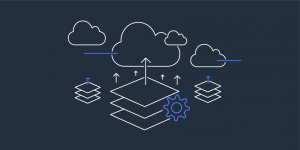Integration & Automation
Introducing the Infrastructure & Automation blog
 With all the services and features that Amazon Web Services (AWS) launches, it can be a challenge to figure out how you can use these services to deploy and maintain your environments.
With all the services and features that Amazon Web Services (AWS) launches, it can be a challenge to figure out how you can use these services to deploy and maintain your environments.
We understand, because like many of you, the AWS Quick Start team solutions architects are customers of the various AWS services. When we are working on a Quick Start, we face many of the same challenges you as customers may face.
That is the objective of this blog: to share the experiences and challenges that the AWS Quick Start team has faced and patterns and tools that we have developed when producing Quick Starts. Through our posts, we will share our real-world experiences utilizing AWS services and how we use those services to automate production-grade deployments. Our hope is that by sharing these experiences and lessons learned with our partners and customers, we can assist you in adopting these same patterns and tools to get the most out of AWS services.
Some of the topics we hope to cover are:
- How we automate testing of AWS CloudFormation templates
- How we build CI/CD pipelines for AWS CloudFormation
- How you can deal with common errors in AWS CloudFormation
- How we combine various services such as AWS Lambda, AWS Systems Manager, and AWS Secrets Manager with AWS CloudFormation
- How we automate partners’ solutions with various AWS container services, such as Amazon Elastic Container Service (Amazon ECS) and Amazon Elastic Container Service for Kubernetes (Amazon EKS)
Also, as we release new Quick Starts, we will share the details of how they work, and what they aim to accomplish.
What are AWS Quick Starts?
AWS Quick Starts are automated reference deployments built by AWS solutions architects and AWS partners to help deploy popular solutions on AWS, based on AWS best practices for security and high availability. These reference deployments implement key technologies on the AWS Cloud.
The Quick Start team at AWS includes solutions architects and developers who test these Quick Starts to ensure they meet a certain level of quality. We help provide guidance to AWS Partners, and we moderate the repositories for Quick Starts. Our contributor’s guide delineates how customers and partners can collaborate with the AWS Quick Start team and our requirements around building and testing Quick Starts.
What’s next?
In conclusion, follow this blog if you have an interest in Quick Starts, AWS Cloud automation, or DevOps. We will be covering patterns, techniques, tips, and tricks that we have learned when developing AWS Quick Starts. We will also share information on some of the tools we have built to continually test AWS CloudFormation templates, such as Taskcat. Our first post covers how to overcome circular dependency errors in AWS CloudFormation templates.